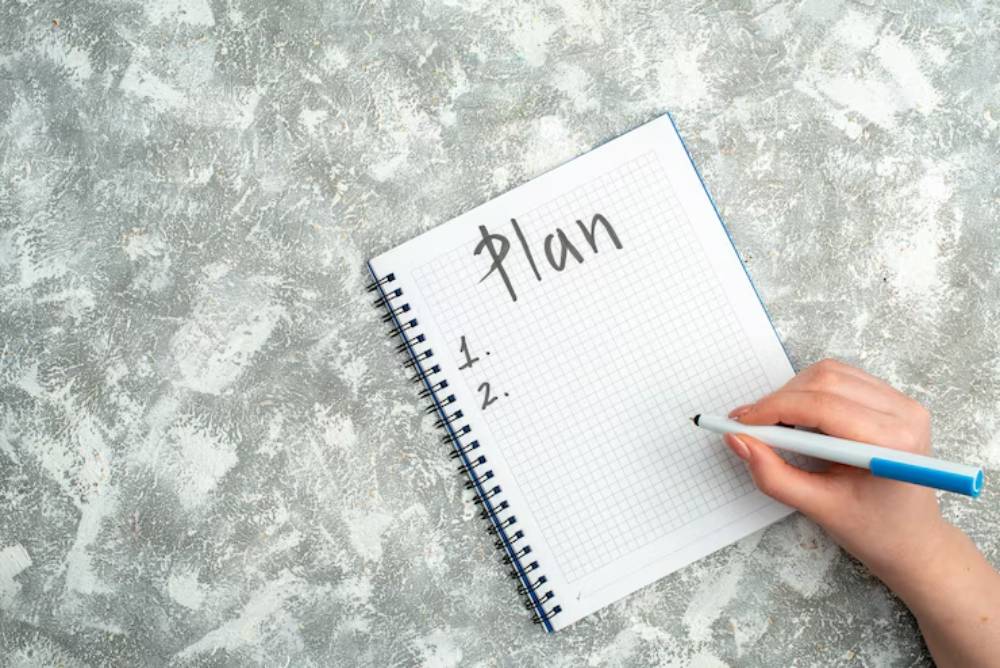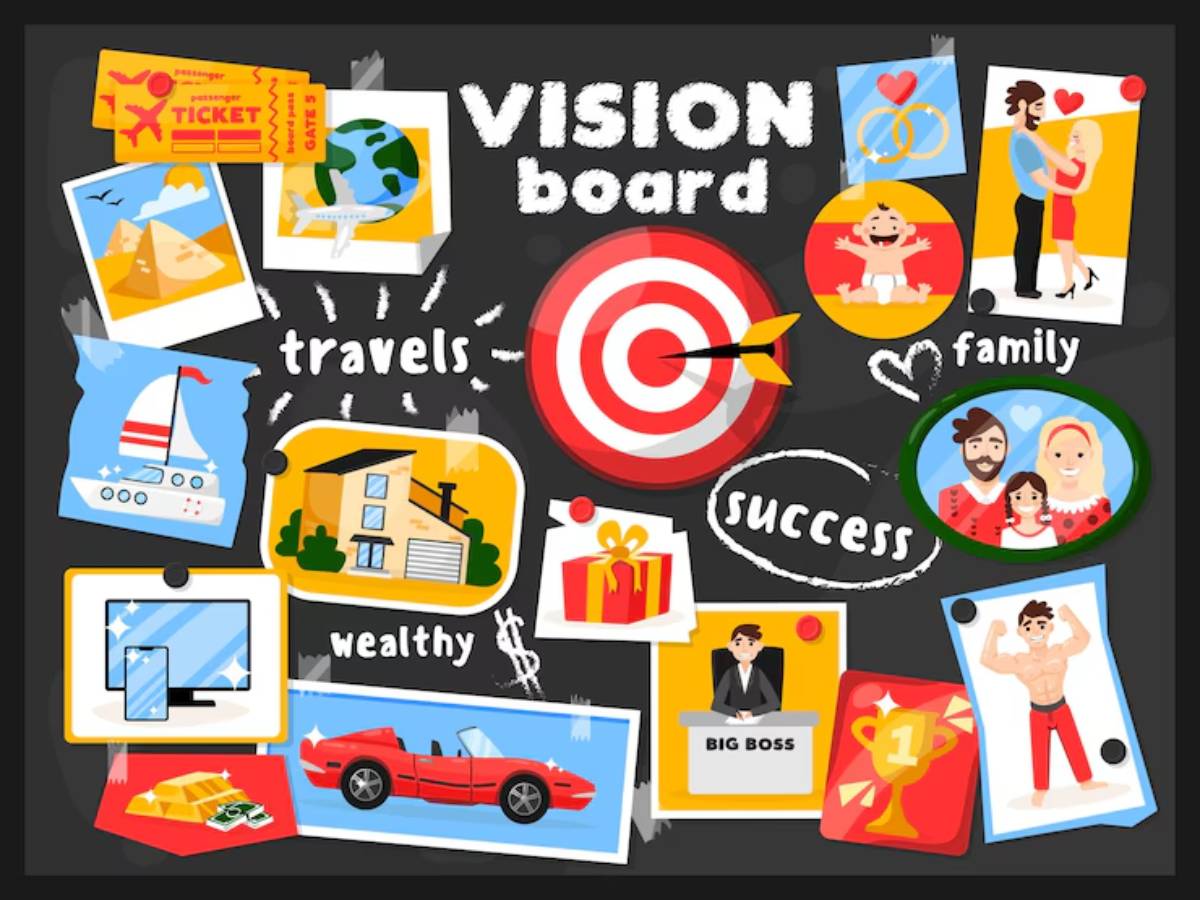
How to Turn a Vision Board into a Weekly Action Plan
Vision boards are powerful for inspiration—but they’re only the beginning. Turning your dreams into reality requires action. That’s where a structured weekly plan comes in.
This guide explains how to connect your board to real outcomes with a simple, consistent vision board strategy, a clear goal execution plan, and a repeatable weekly action schedule that keeps you on track without overwhelm.
Pro Tip: Your vision board is the destination. Your action plan is the road that gets you there.
Quick Guide: Why Action Planning Matters
- Turns long-term dreams into short-term steps
- Builds momentum and confidence
- Creates accountability
- Helps prioritise your time and energy
- Bridges the gap between visualisation and achievement
Important: The key is to start small and stay consistent. Big wins are built from small daily efforts.
Step-by-Step: How to Build a Weekly Action Plan from Your Vision Board
Step 1: Review and Clarify Your Vision Board
Before creating any plan, take 10–15 minutes to sit with your board.
Ask yourself:
- What goals do these images represent?
- Which areas of life do they connect to (health, career, finance, etc.)?
- What do I want to focus on right now?
Quick Tip: Choose no more than 3 core focus areas to start. Less is more when building new habits.
Step 2: Break Big Goals Into Smaller Milestones
Identify micro-goals you can achieve in a week or two.
Example:
| Vision | Weekly Milestone |
|---|---|
| Run a half-marathon | Walk 3x a week for 30 minutes |
| Start a new business | Research 3 competitors and write a business summary |
| Learn a language | Practice 15 minutes a day with an app |
Pro Tip: Your milestones should feel achievable and actionable—not overwhelming.
Step 3: Create a Weekly Action List

Turn milestones into specific actions for this week.
- Use a journal, planner, or digital task manager
- Assign days or deadlines to each task
- Make it visual—use checkboxes or colour coding
Example:
- Write 500 words for blog post
- Prep 3 healthy meals on Sunday
- Meditate 10 minutes on Monday, Wednesday, and Friday
Quick Tip: Block 30–60 minutes on Sunday or Monday to plan your week in peace.
Step 4: Use the SMART Goals Framework
Refine your weekly actions so they’re:
- Specific
- Measurable
- Achievable
- Relevant
- Time-bound
Vague goal: “Be healthier” SMART goal: “Go to the gym on Monday, Wednesday, and Saturday for 45 minutes”
Pro Tip: SMART goals increase follow-through by adding clarity.
Step 5: Add Your Tasks to a Weekly Schedule
Now place your tasks into a weekly calendar or routine.
Use:
- Paper planners
- Google Calendar
- Time-blocking tools
- Habit tracker apps
Quick Tip: Include buffers and flexibility. Life happens—your plan should adapt.
Step 6: Track Progress and Reflect Weekly
End your week with a short check-in.
Ask yourself:
- What did I complete?
- What did I avoid or miss? Why?
- What felt energising? What drained me?
- What’s the next step toward my vision?
Pro Tip: Keep a “done list” to track wins—even small ones boost momentum.
Step 7: Celebrate Progress, Adjust as Needed
Recognise your wins—big or small. Then tweak your plan for next week.
- Didn’t complete a task? Reschedule or break it down further
- Feeling bored? Shift focus to a different vision board item
- Hit a goal? Celebrate and set a new milestone
Quick Tip: Consistency > intensity. A slow, steady plan is more sustainable than an all-or-nothing sprint.
This format pairs beautifully with Creating a Centrepiece Image for Your Vision Board to make your core goal stand out.
Weekly Action Schedule Example Template
Here’s how a simple weekly plan might look, tied to a vision board with goals in health, career, and mindfulness:
| Day | Action |
|---|---|
| Monday | 30-minute workout, write 500 words, meditate 10 minutes |
| Tuesday | Prep meals, outline new project, take a nature walk |
| Wednesday | Strength training, edit blog, phone-free evening |
| Thursday | Review business plan, stretch before bed |
| Friday | Finish draft, evening walk, gratitude journal |
| Saturday | Fun activity, review finances, reflect on the week |
| Sunday | Meal prep, plan next week, relax screen-free |
Pro Tip: Keep it simple and realistic—what fits into your life.
Tools to Help You Succeed

| Tool | Benefit |
|---|---|
| Google Calendar | Easy scheduling and reminders |
| Trello or Notion | Visual task boards and lists |
| Habit tracking apps | Build routines and daily habits |
| Weekly planner sheets | Paper-based structure and journaling |
| Pomodoro timers | Help focus during action tasks |
Quick Tip: Combine digital and paper tools if it helps you stay accountable and creative.
Common Mistakes to Avoid
| Mistake | Solution |
|---|---|
| Planning too much | Focus on 3–5 key tasks each week |
| Forgetting to check your plan daily | Set reminders or schedule a daily review |
| Being vague | Convert “work on project” to “write project outline” |
| Ignoring wins | Celebrate progress regularly to stay motivated |
| Skipping reflection | Weekly reviews help adjust your strategy and stay aligned |
Frequently Asked Questions
Do I need to complete everything on my plan every week?
No. Life happens. Focus on effort and consistency, not perfection.
How do I stay motivated?
Visual reminders (like your board), check-ins with a friend, and mini-rewards all help.
What if I don’t know what actions to take?
Start by identifying the smallest first step. Clarity comes from doing.
How long should my weekly planning session take?
30–60 minutes is usually enough once you’re in the habit.
Should I keep my vision board visible all week?
Yes! Glancing at it daily reinforces intention and helps keep your actions aligned.
Make Your Vision Board Work For You
Your vision board captures your dreams. But real change happens through consistent action. By building a simple, realistic goal execution plan and sticking to a structured weekly action schedule, you can turn inspiration into results.
Think big. Start small. Act weekly. That’s how vision becomes reality.
Learn how this compares to more dynamic layouts in Minimalist vs Collage Style Boards: Which Is Better?.


